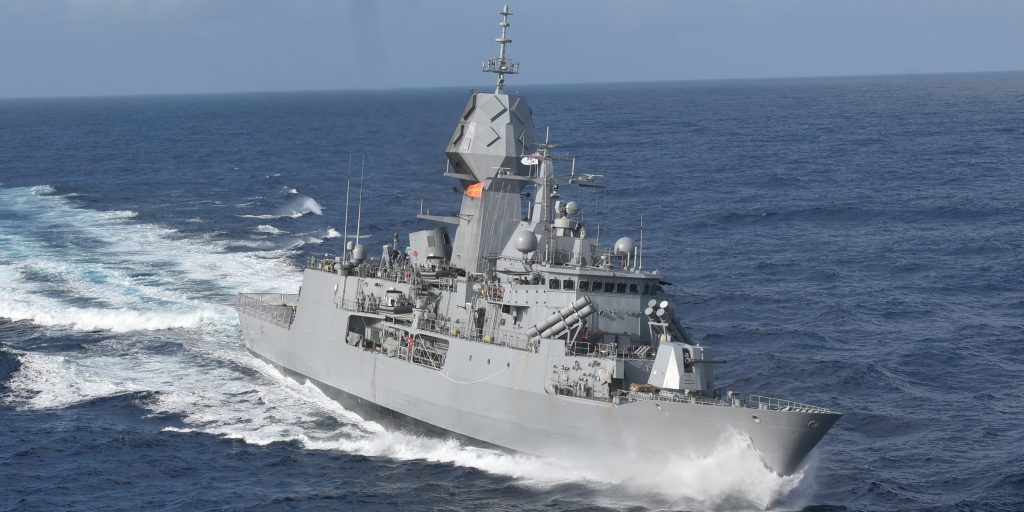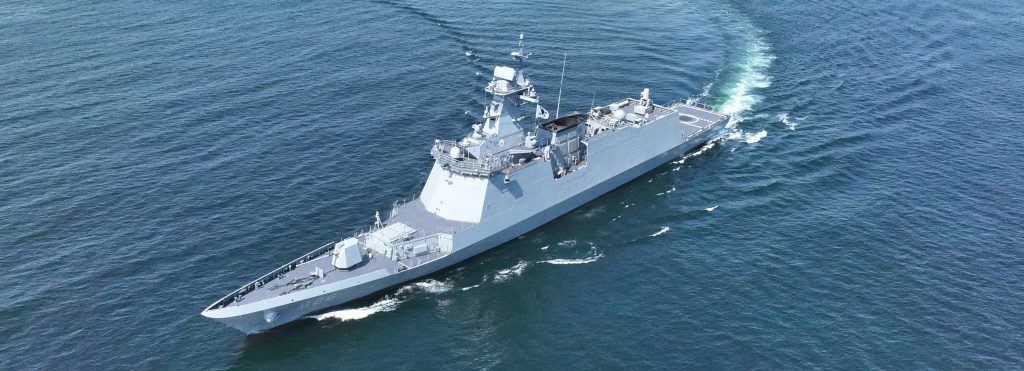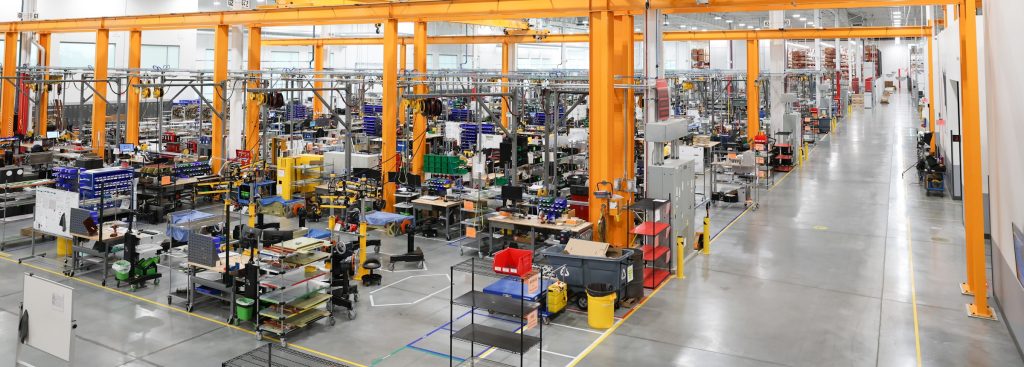
Today, the Royal Australian Navy is focused on building a more capable and lethal frigate to play a critical role in defending against evolving security challenges and the changing nature of warfare. As part of the country’s plan to increase the size and capabilities of the Navy, the new frigates will play an important strategic role from protecting the country’s maritime borders and northern approaches to a range of regional joint operations.
As a frontline surface warship, the new capabilities of these frigates will allow them to operate more independently and effectively in higher-threat environments. And with power-hungry advanced sensors, new weapon systems, and a need for quiet operations for anti-submarine missions, a flexible hybrid-electric power and propulsion system will give commanders the confidence to place these new platforms at the tip of the spear for naval operations.
The Hybrid-Electric Drive Advantage
Today, advanced Hybrid-Electric Drive (HED) systems are widely used across allied navies including, South Korea’s new Daegu Class frigates, the United States, the United Kingdom, and French and Italian Navies. Their operational flexibility, superior fuel economy, and significantly reduced life-cycle costs are all reasons HED systems have become standard across allied navies around the world.
The flexibility of HED systems is a force multiplier, giving any combat ship variable propulsion capabilities. For high-speed operations, these vessels operate on a gas turbine engine; and for quiet anti-submarine warfare or extended on-station loitering needs, users can easily switch to the electric generator system.
HED systems also deliver additional conditioned power for the new, more powerful sensors and weapons systems that will be installed, as well as for future power-hungry directed energy weapons and sensor systems. For the coming new Royal Australian Navy (RAN) frigates, a Hybrid Electric Drive system offers a significant increase in operational capability while ensuring the fleet is modernized to be on par with international partners.
A Proven Naval Hybrid Electric Drive
The Daegu Class FFX-II and Chungnam Class FFX-III frigates of the Republic of Korea (ROK) Navy operate Hybrid Electric Drive power and propulsion systems designed by the trusted U.S. defence company, Leonardo DRS. The company has years of experience designing and building advanced mil-spec hybrid electric drive and electric drive systems for allied U.S. and allied maritime fleets and is the designer and provider of the most advanced electric propulsion system in the U.S. Navy, currently being installed in the new Columbia-Class ballistic missile submarine fleet.
The Leonardo DRS ruggedized, power-dense, and high-performance HED systems are proven and have met and exceeded stringent ROK Navy mil-spec requirements. At the heart of the technology are some of the most power-dense permanent magnet motors on the market that deliver greater power than similar systems.
The two power-dense permanent-magnet motors deliver advantages in terms of component size, weight, efficiency and performance compared with conventional electric induction motors. The Leonardo DRS design can produce more torque from the same amount of supplied current, and the system’s compact design allows for flexible engine room design and increased cargo space, and its rugged construction ensures reliability and durability.

Critically Quiet and Efficient Operations
Traditional fuel-powered propulsion systems in current RAN frigates generate significant noise that is transferred from the ship into the waters beneath, and that noise exposes the ship to adversarial submarines searching for targets. With the Hybrid-Electric Drive system installed on the ship’s drive shaft, operators can easily switch between the noisy gas turbine engine and the electric drive system by decoupling the reduction gear. That flexibility allows the vessel to quickly move from high-speed operation using the turbine engine, to significantly reducing the noise signature of the ship for a range of requirements.
In today’s complex open water battlespace, reducing engine noise has become a critical survivability tool for navies around the world. Because the new RAN frigates will play a sizeable role in anti-submarine warfare, reducing the noise signature of the vessel is essential. When the hybrid-electric drive is engaged, the propulsion plant’s contribution to the ship’s noise signature is significantly reduced to only the quiet running of the electric propulsion motor, the propeller and the auxiliaries connected to the line shaft.
Future-Proofing Frigates
Today’s advanced sensors and weapon systems require much more electric power than current ship-based missiles and protection systems. The possibility of future high-powered lasers to advanced radars upgrading fleets will require large amounts of on-demand electric power that ships with HED systems will support.
Current fuel-based propulsion engines will not be able to provide additional electric power, instead reducing the operational capabilities of these ships. Additionally, the reduced size and weight of the Leonardo DRS HED system over other HED systems takes up less space in the engine room, allowing for installation of additional future ship upgrades.
And because electric motors are virtually maintenance free, life cycle costs over the planned 40-year vessel life are minimized by reducing maintenance hours needed.
Much like ROK Navy frigates, the RAN can expect to have a built-in advantage of reducing not only fuel and maintenance requirements, but total lifecycle costs and increased safety for the fleet.
A modern and advanced HED power and propulsion systems ensures RAN frigates will be future ready from the start while offering confidence the combat life of the fleet will easily be extended.
Conclusion
As the Royal Australian Navy looks to build a more capable and lethal frigate to play a critical role in defending against evolving security challenges and the changing nature of warfare, a crucial component enabling these new platforms should be a proven world-class Hybrid Electric Drive system that will provide advanced and flexible power and propulsion capabilities for today and well into the future.
The same Leonardo DRS advanced hybrid electric drive system in today’s ROK Daegu Class FFX-II frigates will provide the RAN with class-leading performance, efficiency and operational capability in an affordable, power dense package. This technology is a prime example of the system level optimization that can be achieved from a proven propulsion and electric plant.
The mission-flexible nature of the Hybrid-Electric Drive system allows the vessel to quickly move from
high-speed operation using the turbine engine to the electric generator, significantly reducing the noise signature of the ship for a range of requirements. It is a force multiplier for commanders who will be able to use these modern frigates in ways not previously seen in naval operations.
And as regional and global adversarial threats grow, a Hybrid Electric Drive system, equal to those installed on allied navy ships around the world, will provide RAD frigates with the space and power for continued modernization with tomorrow’s power-hungry systems.
As a frontline surface warship, the new RAN frigates should be built with a proven and powerful hybrid-electric power and propulsion system to give commanders the confidence to place these new platforms at the tip of the spear for naval operations.
